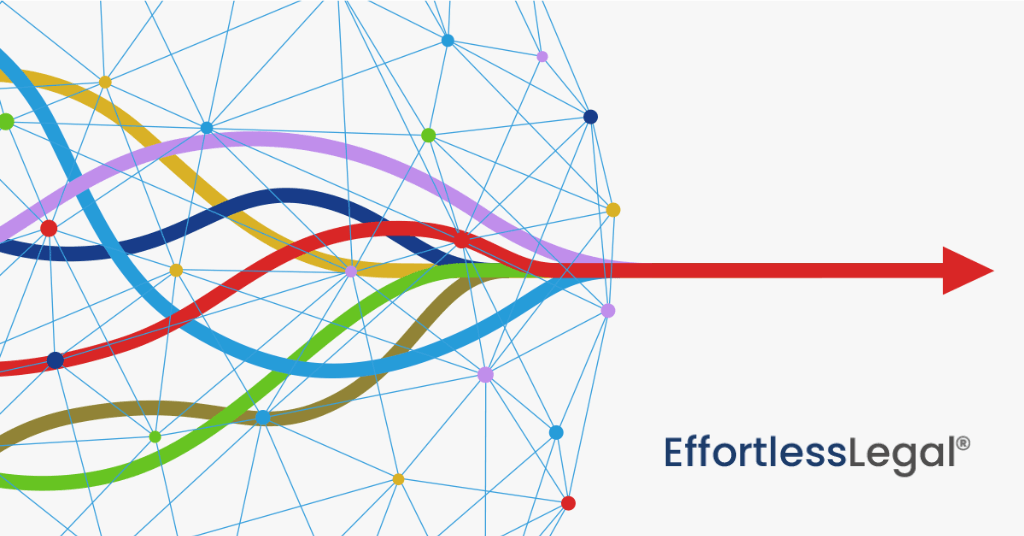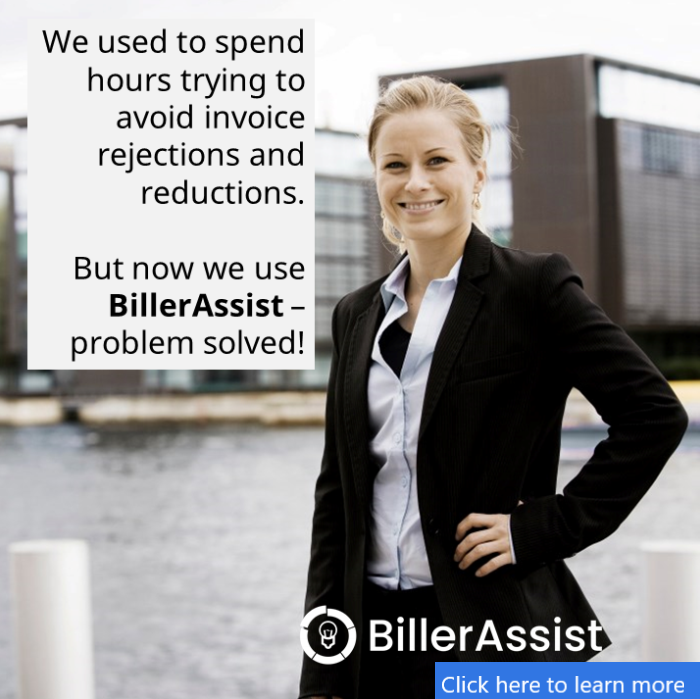How Your Law Firm or Legal Department Can Quickly Become “Data-Driven”
A recent article in the Illinois Bar Journal asks:
“When it comes to optimizing your practice, do you trust your gut? Don’t. If you aren’t using data to measure what works and what doesn’t, you can’t be sure you’re winning the game.
The good news: your practice generates the data you need to gauge success and adjust as needed.”
Hourly billing remains prevalent in the legal industry. As such, most law firms and in-house legal departments have extensive and meticulously maintained timekeeping, invoicing, and other billing records.
Billing records contain valuable insights into efficiency and areas for improvement. These insights can now easily be revealed.
This article provides an overview of how law firms and in-house legal departments can quickly start using their own billing data to improve their bottom line.
Unlock the Valuable Insights in Your Billing Records
The first step in using your own billing data to improve efficiency is to make sure your billing entries are categorized in an easily-usable and standardized way.
Many law firms – especially those that represent insurance companies, or other larger corporations – are often already required to categorize all of their time and expense entries using billing codes. Categorizing time and expense entries using billing codes has been a notoriously tedious and time-consuming hassle for law firms, as the codes traditionally have been applied manually.
However, new applications allow law firms to completely automate the process of coding their bills. With these applications, thousands of billing entries can be accurately coded in just minutes or seconds.
With billing codes now becoming automated, the process is now easy and inexpensive. More law firms and in-house legal departments can start taking advantage of the benefits of being able to analyze their billing data.
When billing codes are properly used, billing data suddenly becomes much more useful.
For example, historic billing and collection data can be used to improve future performance in real time, and even prevent non-billable and unbillable work altogether. As another example, tying billing data to underlying work product allows hyper-accurate budget projections, staffing need projections, timelines, and the like.
Why Billing Codes Are Important
The goal of billing codes is to create a standardized and consistent way for clients and law firms to make sure they are comparing apples to apples.
The use of legal billing codes like the Uniform Task-Based Management System (UTBMS) first started more than 20 years ago. Attorneys sometimes refer to UTBMS or other billing codes as “LEDES codes”, but the acronym “LEDES” (Legal Electronic Data Exchange Standard) actually refers to the uniform electronic billing format that is often used to submit UTBMS-coded invoices.
UTBMS and other billing codes regimes classify legal work into discrete tasks, activities, and expenses. This classification allows otherwise unique and distinct billing entries to be more easily standardized, tracked, and analyzed.
Standardization increases transparency for law firms and clients alike. Using standardized methods of categorization enable both clients and law firms to capture meaningful billing information and data into a more simple and digestible form to analyze legal services.
For example, the International In-house Counsel Journal recently noted that using billing codes “provides for actionable information from that data is central to being able to manage a legal department strategically and with greater efficiency. This is why the Uniform Task-Based Management System (UTBMS) code set is critical when looking at process improvements.”
Similarly, a recent Deloitte study found that:
“Legal spend analysis facilitates effective budgeting by providing a consistent format for the reporting of all matters, allowing for better comparison with prior matters and improved estimates of future similar matters. Standardization of billing helps to increase transparency across different projects and different clients, which can reduce administrative efforts. Legal spend data can be important in making strategic decisions for clients by allowing them to compare costs across law firms, and choose the most cost-effective law firm for different categories of the work."
Without utilizing the UTBMS or similar billing codes standards, it is difficult to accurately assess the efficiency of legal work, or to develop useful insights that rationalize outside counsel retention or legal spending decisions.
Using billing codes helps both clients and law firms to compare and analyze disparate legal services and expenses. If billing codes are accurately and uniformly applied, billing data can more easily be used to improve performance and profitability metrics such as realization and collection rates.
When time and expenses entries are consistently categorized using a standard system like UTBMS codes, the invoices for one matter suddenly become useful in assessing the invoices for another matter. Similarly, by using billing codes, law firms can more accurately compare the efficiency of one associate to another, and in-house legal departments can more easily compare different law firms.
How to Achieve Accuracy and Uniformity
Accuracy and uniformity are both paramount with billing codes.
With manually entry, billing coded invoices are too often riddled with overuse of “catch-all” codes, idiosyncrasies regarding code applies to which task or activity, or even codes that seem to be randomly applied as if by repeated inconsistent mistakes.
If the UTBMS codes are not accurately and uniformly applied, the billing data effectively remains as difficult or even impossible to use as before.
However, accuracy and uniformity can now be achieved by machine. Using machine learning and AI with historical billing data allows codes to be applied to new billing entries and invoices the same way every time.
Automating the task of applying billing codes removes a tedious hassle. But perhaps more importantly, and as the Deloitte study also noted, automating billing codes removes human idiosyncrasies, errors, and other inevitable sources of “bad data”.
Running the risk of making significant decisions based on inaccurate or misleading data can be devastating, but uniformly applied data standards make for more carefully informed decisions using empirical evidence.
Reducing Write-Downs, Write-Offs, and Billing Disputes
Various studies have demonstrated that the amounts of time logged by attorneys but then written down prior to invoicing, as well as the amounts of time written off due to non-payment, have both significantly increased in recent years, even after the lows of the “Great Recession”.
According to a recent report by Georgetown University Law Center and Peer Monitor, many law firms participating in the survey increased billing rates at different levels. However, the report continues, the rate increases were met with “pressure on the realization rates that firms were able to achieve.” Stated differently, firms trying to achieve profit increases solely through billing rate increases are often thwarted – i.e., raising the hourly rate does little good, if the client pays less of the hours billed.
Similarly, a recent Legal Trends Report by Clio finds that small to mid-sized law firms continue to write down (i.e., do not invoice) as much as 20% or more of their time, and then lose further amounts due to write-offs when clients do not pay the full amount due.
In fact, the recent Industry Outlook report by Major, Lindsey & Africa finds that as law firms expand their use of various solutions, they often miss an opportunity to optimize profits by evaluating, “productivity and growth, spot emerging business trends and build new pricing models” to increase profits and productivity.
Similarly, in-house legal also often miss opportunities for greater efficiency. A recent Thomson Reuters report entitled “Corporate Law Departments are Using Metrics to Manage Spending on Outside Counsel” concludes that automation reduces lost time and damage to relationships arising from billing disagreements.
The report indicates that automation standardizes and uniformly applies the determination of when and where invoices are out of compliance.
This means that automated legal billing review not only significantly reduces time required for internal resources to review invoices and resolve disputes, but it also helps reduce friction between in-house law departments and their outside counsel counterparts.
Moreover, shorter invoice review periods often translate into faster payments for outside counsel, which in turn can actually improve relationships.
Moving Forward
The above studies demonstrate the growing need for law firms and legal departments to deliver high-quality legal services at lower costs, with improved efficiency. With this need in mind, data-driven solutions that help decrease legal spend — while also improving law firm profitability — are becoming more widely adopted within the legal profession.
In fact, over the last several years, many articles have discussed how tech-savvy legal departments and law firms of various sizes are “adopting computer-assisted billing applications with valuable features that save time, provide for more accurate legal bill review, and ultimately help reduce unbilled and wasted work.”
When evaluating the various solutions, it’s important to look for applications that offer various features that:
- Reduce or eliminate miscategorizations of billing data, as these can disrupt the myriad valuation and related decisions involved in the billing process;
- Use the law firm’s or legal department’s own unique historical billing data, as this allows a particular firm’s or company’s practices and requirements to be implemented in a narrowly tailored fashion; and
- Easily work or “integrate” with the law firm or legal department’s already existing systems, as this allows for greater data continuity and little if any service disruption.
For example, as discussed in a recent article in the ABA’s Law Practice Today publication, data-driven solutions like BillerAssist EasyCodes Edition allow law firms to “gain real-time insights in order to make better business decisions and improve their bottom line, without simply raising hourly rates”.
Likewise, legal departments and their in-house counsel should consider data-centric applications to find the best ways to increase efficiency and productivity. Examples include EffortlessLegal’s BillerAssist for Clients, among others.
With the rise of AI and machine learning technologies, law firms and legal departments alike should explore their opportunities to automatically standardize their billing data, and begin using it to reveal ways to improve efficiency.
Conclusion
Becoming “data driven” is actually easy. Using their own billing data, both law firms and legal departments can rise to the forefront because of newly revealed ways to improve efficiencies.
Law firms and clients alike continue to look for new ways to increase efficiency and to develop better practices.
Implementing the UTBMS or similar standards is one method to advance these goals. In fact, there are now various legal applications that have the ability to quickly streamline these standards and processes.
The potential of standardized billing codes and the insights it provides are limitless, and its application extends outside of just billing. By combining internal litigation records with billing data for the related cases, law firms and law departments can do much more.







